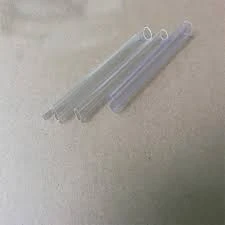ធ្នូ . 22, 2024 07:37 Back to list
drain pipe fittings
Understanding Drain Pipe Fittings A Comprehensive Overview
Drain pipe fittings play a crucial role in plumbing systems, ensuring efficient drainage and management of wastewater. These essential components facilitate the connection between different sections of piping, enabling seamless water flow and preventing leaks. In this article, we will explore the various types of drain pipe fittings, their applications, materials, and best practices for installation and maintenance.
Types of Drain Pipe Fittings
1. Elbows These fittings allow for directional changes in drain pipes, typically available in 45-degree or 90-degree angles. Elbows are essential when routing pipes around corners or obstacles.
2. Tees A tee fitting is designed to connect three pipe segments. It allows water to flow in multiple directions, making it ideal for branching out a single drain line into two or more.
3. Couplings Couplings are used to connect two straight pipes, ensuring a secure and watertight connection. They can come in various diameters to match the specifications of the pipes being joined.
4. Adapters These fittings facilitate the connection of pipes with different diameters or materials. They are essential in renovations or repairs where existing plumbing needs to be combined with new systems.
5. Caps and Plugs Caps are used to seal the end of a pipe, while plugs can seal both the pipe and the end of an opening. These fittings are useful when a particular section of the plumbing system needs to be taken offline for repairs or modifications.
6. Traps Drain traps are essential components that prevent sewer gases from entering the home. They create a seal of water that blocks odors while allowing wastewater to flow through.
Materials Used in Drain Pipe Fittings
Drain pipe fittings are made from various materials, each with its advantages and disadvantages
- PVC (Polyvinyl Chloride) Widely used in residential plumbing, PVC is lightweight, resistant to corrosion, and easy to install. However, it is not suitable for high-temperature applications.
- ABS (Acrylonitrile Butadiene Styrene) This material is known for its strength and impact resistance. ABS fittings are often used in drain, waste, and vent applications and are suitable for both indoor and outdoor installations.
- Cast Iron Traditionally used in older plumbing systems, cast iron fittings offer durability, sound insulation, and resistance to high temperatures. However, they are heavy and can rust over time.
drain pipe fittings

- Copper While more commonly used for supply lines, copper fittings can also serve in specific drain applications. They are resistant to bacteria and corrosion but are more expensive and require soldering for installation.
Installation Best Practices
Proper installation of drain pipe fittings is crucial for ensuring a leak-proof system
1. Measure and Plan Before cutting or assembling pipes, measure carefully to ensure a proper fit and plan the layout to minimize unnecessary bends and fittings.
2. Deburr and Clean Any raw edges from cutting pipes should be deburred, and all surfaces should be clean to create a secure seal.
3. Use Correct Adhesives For plastic fittings, use solvent cement specifically designed for the type of plastic. For metal, ensure appropriate solder or fittings are utilized.
4. Test the System After installation, it’s essential to test the drain system for leaks. Run water through the system to check for any signs of vulnerability.
Maintenance Practices
Regular maintenance can prolong the lifespan of drain pipe fittings and prevent costly repairs. Here are some key practices
- Inspect Regularly Check for any signs of leaks, corrosion, or wear, especially in older systems.
- Clear Blockages Use appropriate methods to clear clogs, such as plunging or using enzyme-based products, to avoid damaging the pipes.
- Know Your System Familiarize yourself with the layout of your drainage system, as this knowledge can be valuable during repairs or updates.
In conclusion, understanding the variety and function of drain pipe fittings is essential for effective plumbing. Proper selection, installation, and maintenance are key to creating a reliable drainage system that minimizes issues and promotes sustainability. Whether you are a homeowner or a professional plumber, a solid grasp of these components will lead to more efficient and long-lasting plumbing solutions.
-
Durable PP Rigid Sheet: Lightweight, Chemical Resistant Solutions
NewsAug.21,2025
-
PVC Grey Sheet for Extraction: Chemical Resistant & Durable
NewsAug.19,2025
-
Durable PVC Pipe Fittings for Plumbing & Irrigation Needs
NewsAug.18,2025
-
HDPE Steel Belt Reinforced Spiral Corrugated Pipe | High Strength
NewsAug.17,2025
-
HDPE Pipe Fittings: Durable, Leak-Proof Solutions
NewsAug.16,2025
-
Premium CPVC Sheet: High-Temp & Chemical Resistant Solutions
NewsAug.15,2025

